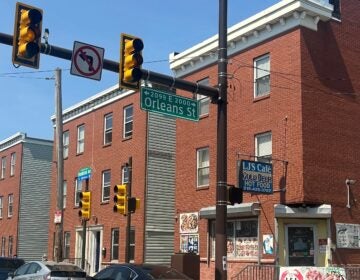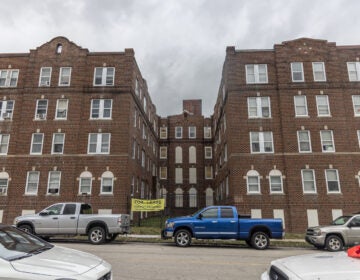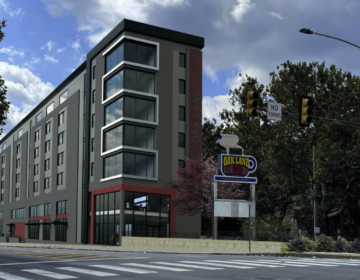Council hears fears of outlying “middle” neighborhoods’ decline

On Tuesday afternoon, Councilwoman Cherelle Parker held a marathon hearing on “Middle Neighborhoods,” the kind of stable, working-to-middle class areas that kept Philadelphia afloat in the worst years of the urban crisis.
Today, Philadelphia’s middle neighborhoods look like they need a champion, especially as greater Center City booms and they are threatened by decline.
Neighborhoods like Overbrook, West Oak Lane, and Oxford Circle were able to retain large populations of working, tax-paying residents in the 1970s and 1980s when many other sections of the city were in serious decline. Their lasting strength is why Philadelphia only lost a quarter of its population during the second half of the 20th century. Other Rustbelt cities—like St. Louis, Baltimore, and Detroit—lost about half their populations in those years.
“Long before Philly started to see a surge in our population, middle neighborhoods have been the foundation of the city’s tax base,” said Parker at the opening of the three-hour hearing.
The concept of “middle neighborhoods” has been advanced by economic development expert Paul Brophy, who recently compiled and edited a book on the subject, and their cause has been championed by Parker—whose district in the upper north and northwest section of the city is almost entirely comprised of such neighborhoods.
Census figures suggest that these neighborhoods began to decline starting around 2010. A Philadelphia Inquirer analysis of Census data found that Overbrook suffered the largest drop in median income between 2000 and 2010, plummeting over $14,000.
The population in majority white middle neighborhoods remained stable, due to an influx of people of other races. Population grew in mixed-race middle neighborhoods and in those with large Hispanic populations, but fell in majority black neighborhoods. (These were the only kind of middle neighborhoods to see such a decline, largely because their black populations increased but their non-black population fell.) These areas also saw elevated levels of foreclosure and eviction, as well as a 5 percent decline in adjusted sales prices.
The hearing featured testimony from Brophy, Congressman Dwight Evans, and eleven other figures in neighborhood development, home preservation, and city government.
Evans too has been a champion of middle neighborhoods, although his ability to pass legislation on Capitol Hill as a Democrat has been limited by the Republican lock on power in Washington amidst a hyper-partisan atmosphere.
“There’s no way you all would have the capacity by yourselves to deal with that issue,” Congressman Evans told the assembled councilmembers. “The president is talking about infrastructure, he’s talking about roads and bridges, but schools should be a part of that infrastructure discussion.”
Evans spoke in promotion of a piece of legislation he’s introduced that he argues will help middle neighborhoods: the Rehabilitation of Historic Schools Act of 2017, the latest iteration of a long-burning idea that would allow Historic Preservation tax credit program to be used for the repair of schools. Currently these tax credits must be used on buildings that are being transformed into a totally new form. Known as the “prior use” rule, many argue that it is outdated and there have been repeated attempts to change the law to allow historically notable schools to make use of the program and fix of their old but beautiful buildings. (GovTrack gives this version a one percent chance of being enacted.)
“One of the things I did when I got to Congress was borrow a notion from a President Trump,” said Evans, referring to the president’s controversial use of Historic Tax Credits in the Trump Hotel project located in D.C.’s old Post Office Pavilion. “Why can’t we just do the same thing with schools to modernize these buildings?”
For his part, Brophy was quick to say he didn’t think the problem could be solved by government.
“This book doesn’t call for a new government program, it calls for a mixture of activities,” said Brophy. “We need people in these neighborhoods to care about these neighborhoods and to see their assets, rather than only seeing liabilities. We need intergovernmental effort from banks, foundations, and the people of the neighborhood.”
Brophy also said part of the issues facing middle neighborhoods are due to suffering reputations that are often worse than the reality, especially around the all-important question of education.
Councilman Allan Domb, chair of the host Committee on Housing, Neighborhood Development and the Homeless, strongly agreed with that sentiment. He said that over 90 percent of the schools he visits are really doing well, but the only ones that “make the paper” are the four or five a year that have serious problems.
Many of the speakers highlighted the work City Council and the Kenney administration have already pursued that would aid such neighborhoods, including the Rebuild Initiative and the soon-to-be expanded Basic Systems Repair Program (BSRP), about a third of which goes to helping residents in middle neighborhoods keep their housing in good shape. A forthcoming home repair loan program spearheaded by Parker and council president Darrell Clarke is meant to target homeowners with incomes above those that are able to access BSRP (which is income restricted).
Although a few such policies were kicked around, the hearing focused more on the challenges than on any one solution. And one can question whether City Council can effectively legislate against a problem that is stoked by national trends like the decline of the middle class, stagnant wages, and the legacy of government-created residential segregation.
WHYY is your source for fact-based, in-depth journalism and information. As a nonprofit organization, we rely on financial support from readers like you. Please give today.







